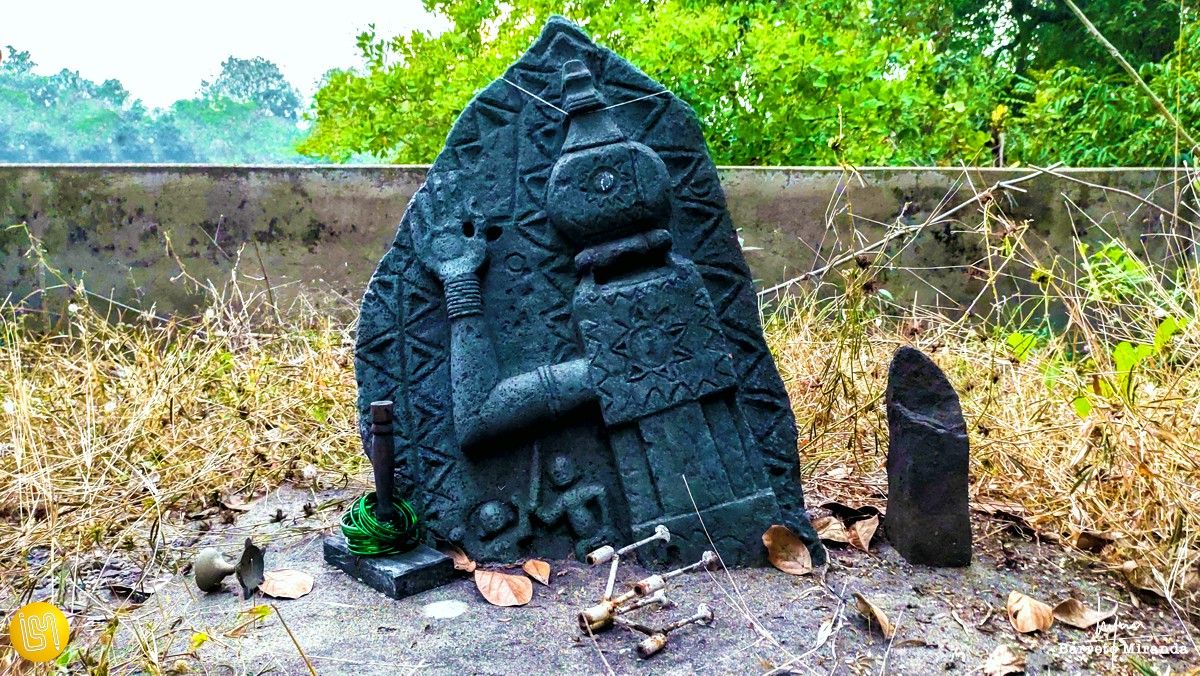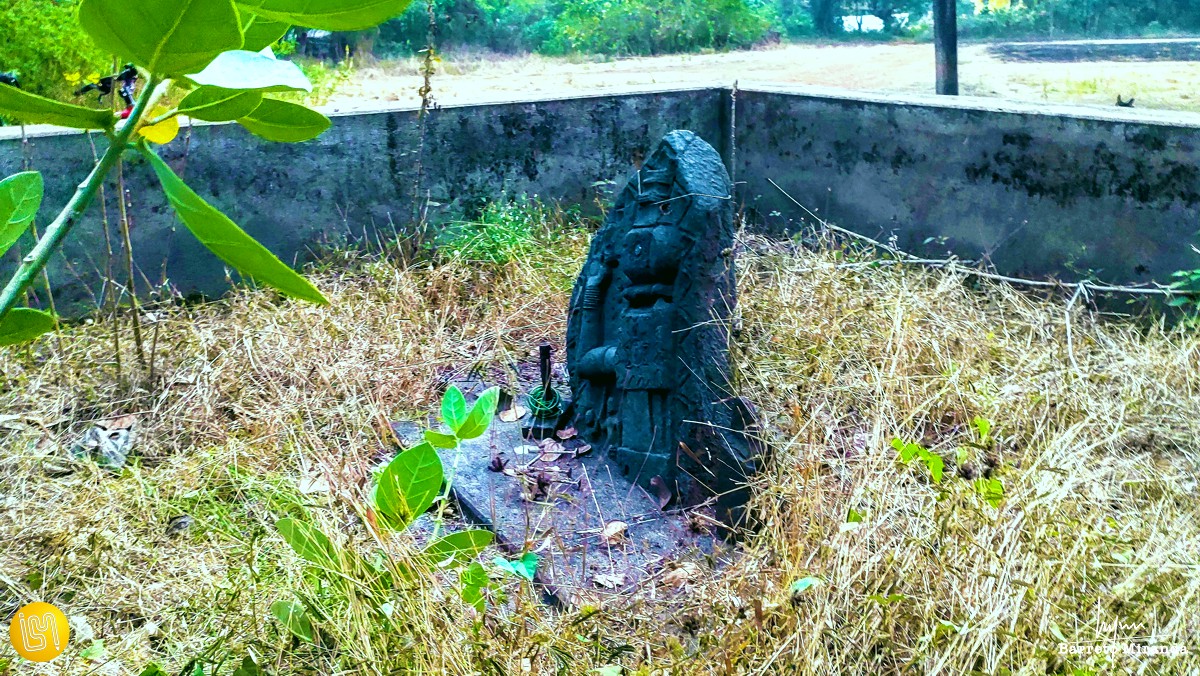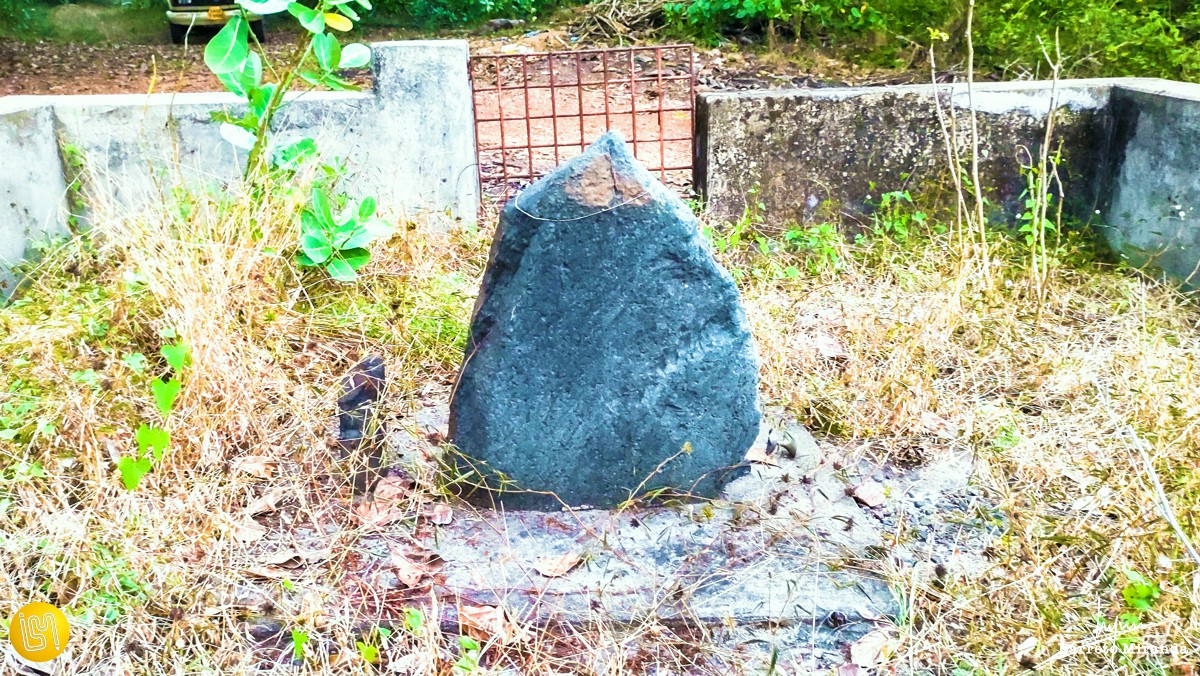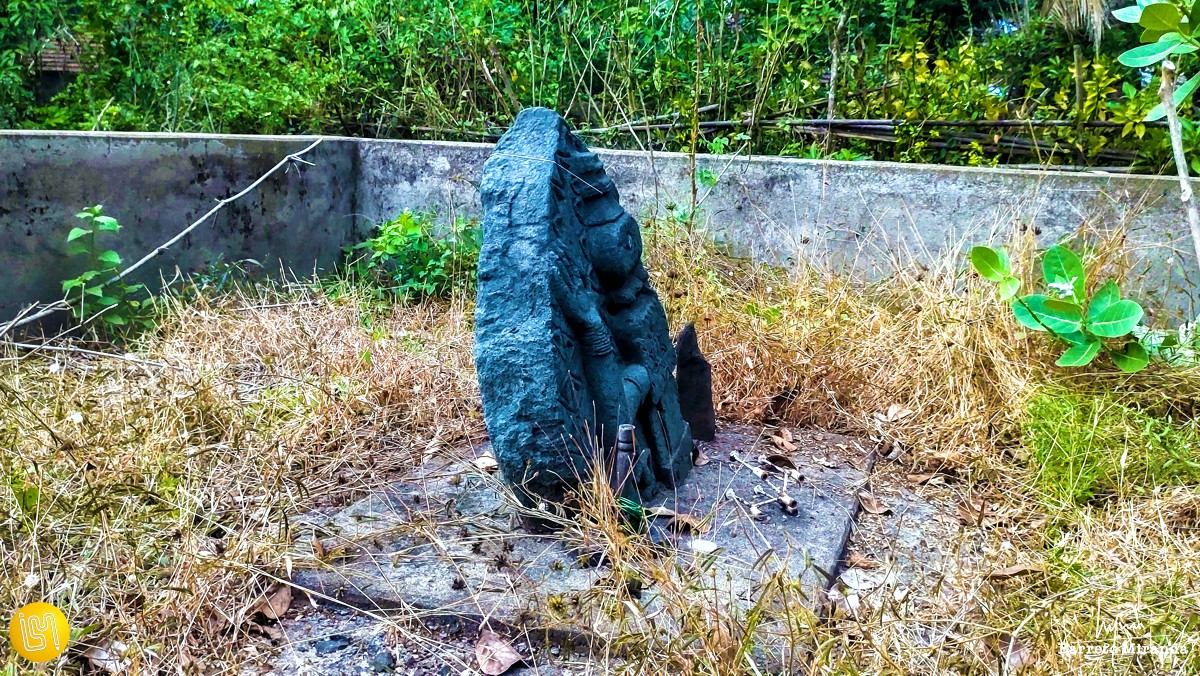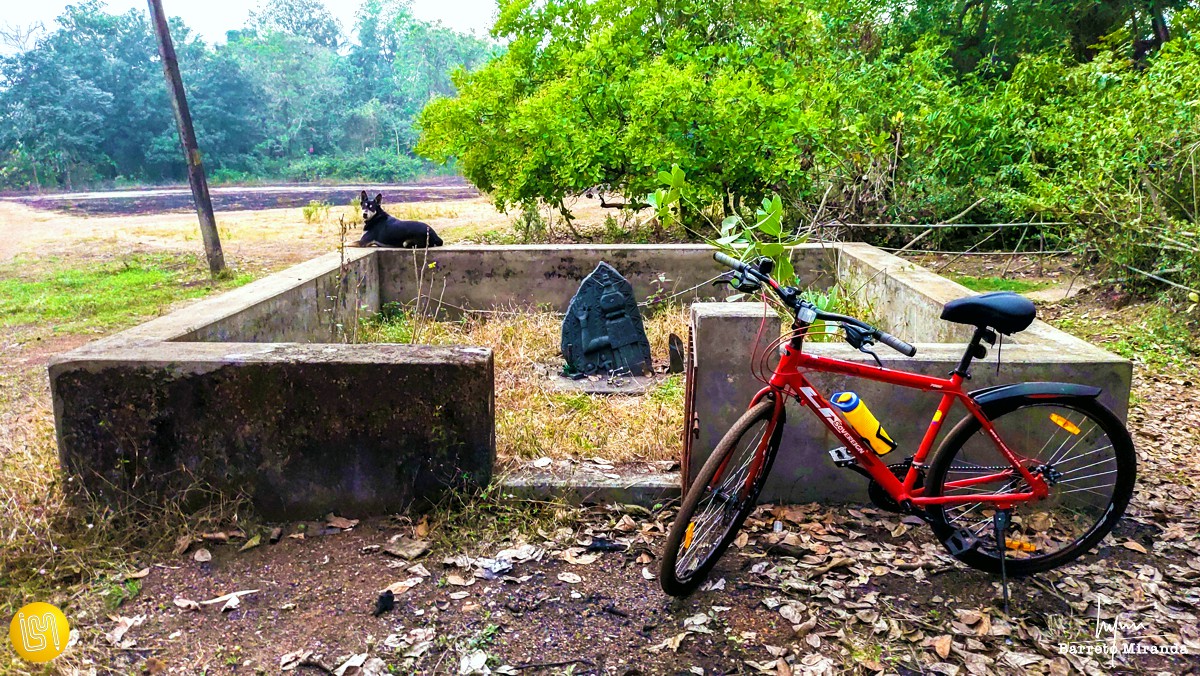Cycling through Chandrapur (present Chandor), the 11th century capital of Goa, I stopped to visit the remnants of the Nandi bull at Cotta when a local person informed me about a sati stone located near Assolda’s Shri Sateri Temple. This stone, which measures about 3.5 by 2.5 feet, lies half-buried in the open, surrounded by a wall.
Sati stones were memorials erected to honor the widows of men killed in battle — widows who, by way of both grief and tradition, had immolated themselves on their husbands’ funeral pyres. Sati sahagamana (self-immolation) was an ancient Indian custom by which the wife follows her husband even in death by climbing on his pyre or climbing one of her own shortly after the death of her husband. It was thought that by doing so, her family would gain merit and have all of their sins forgiven. In the Vijayanagara kingdom, sati or sahagamana was a commonly practised social tradition.
Goa was invaded by the Vijayanagara kings in 1344 and the Bahmani Sultans captured it in 1347.
A sati stone with a visual depiction and/or an inscription, according to history texts, is a very rare find and important for understanding the social and cultural milieu of the period. The husband and wife are frequently shown in the sculptures on these sati stones, as well as the circumstance in which the husband died. A few are fairly vivid in their depictions of the event, such as a fierce fight that resulted in the hero’s death and the depiction of a lady with wifely devotion. Some of these stones have inscriptions that explain the incident, the sati’s name, her husband’s name, and the family’s title.
On this sati stone at Assolda, the right arm is sculpted as if emerging from the pillar emphasizing the importance of the arm raised in blessing. Before entering the flames, the sati blessed the people with her right hand, and she continues to bless her devotees. The wrists are adorned with bangles and the hand is bent at the elbow with the palm facing front in abhaya mudra (showing a lack of fear).
Bangles symbolise the married status of a Hindu women. When a woman’s husband dies, there is a ritual where she is compelled to break her bangles, symbolising her transition into widowhood. The sati stone’s representation of bangles shows that the sati is never separated from her spouse, even after death.
Other elements carved on the stone are the sun and the moon indicating that the sati is immortal and that her fame would survive as long as the sun and moon. In blessing, the hand is raised with fingers upright. Chiselled at the bottom of the stone is a man wielding a sword, a woman and a horse.
This stone must be between 300 and 400 years old and holds a great deal of archaeological significance in reconstructing our cultural past. Stop by the next time you’re passing by to witness this forgotten piece of our history.
Location: https://goo.gl/maps/YuSGEoBpjVwrDMGG9

